Idee e soluzioni per la transizione culturale nel segno delle smart city
Ideas and Solutions for a Cultural Transition in the name of Smart Cities
2021
PROGETTO EDITORIALE
PPAN comunicazione e networking
© 2022 PPAN SRL TUTTI I DIRITTI RISERVATI
EDITORE
PPAN - www.ppan.it
STAMPATO A MARZO 2022
TESTI A CURA DI PPAN E R2M SOLUTION
Si ringrazia Chiara Brivio per PPAN
Un ringraziamento particolare a:
Ruth Schagemann
Paola Marone
Antonello Magliozzi
Ra aele Gareri
PRINTED IN MARCH 2022
TEXTS BY PPAN AND R2M SOLUTION
Idee e soluzioni per la transizione culturale nel segno delle smart city
Ideas and Solutions for a Cultural Transition in the name of Smart Cities
INIZIATIVA PROMOSSA DA AN EVENT BY
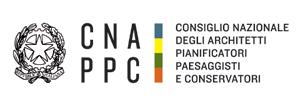

R2M Solution è una società di ingegneria specializzata nella consulenza integrata e multidisciplinare. Fondata a Milano nel 2012 e oggi con sede a Pavia, l’azienda opera come acceleratore per portare le tecnologie e i servizi al mercato nell’ambito dell’innovazione, della digitalizzazione e della sostenibilità, con ricadute dirette sull’ingegneria, l’energia, l’Ict, sui servizi e sui prodotti connessi. R2M Solution vanta uno sta di 75 persone operanti in 5 filiali europee, con un’esperienza di oltre 10 anni nella realizzazione e gestione, nel coordinamento e nella valutazione di ampi programmi di ricerca a livello europeo. R2M Solution è inoltre rivenditore di alcuni dei prodotti più innovativi sul mercato e rivolti al mondo del real estate.
R2M Solution is an engineering company that propose an integrated and multidisciplinary consulting. Founded in Milan in 2012 and now based in Pavia, the company operates as an accelerator to bring technologies and services to the market in the areas of Innovation, Sustainability, Engineering, Energy, ICT and Innovative Product. R2M Solution has a sta of 75 people operating in 5 European branches, with an experience of over 10 years in the implementation and management, coordination and evaluation of large research programs at European level. R2M Solution is also a reseller of some of the most innovative products in the real estate market.
CON IL PATROCINIO DI WITH THE PATRONAGE OF
PPAN è una società indipendente di comunicazione, che si occupa di produzione e di usione di contenuti specialistici sull’architettura e l’ingegneria, e più in generale sul mondo del costruito e sulla città. PPAN cura e attiva strategie e piani di comunicazione, attraverso consulenze mirate con una squadra interdisciplinare, dal giornalismo al management alla grafica. Supporta clienti pubblici e privati, e si propone come partner per portare valore aggiunto e costruire la reputazione dei progetti e degli attori coinvolti.
PPAN is a communication consultancy that develops and broadcasts contents and stories on the theme of the city, with a specific focus on architecture and engineering. PPAN creates and manages strategies and communication plans thanks to its interdisciplinary team, that can support clients and partners from management to graphic design, bringing added value to projects and building up the reputation of the professionals involved.
EUR S.p.A. (90% Ministero dell’Economia e delle Finanze e 10% Roma Capitale) è una società attiva nella gestione e nello sviluppo immobiliare, nell’organizzazione di grandi eventi congressuali e nella promozione culturale nella città di Roma. Dispone di un patrimonio di raro pregio, eccezionale per la quantità di opere monumentali del razionalismo architettonico italiano, al quale si aggiungono 70 ettari di parchi e giardini, aperti alla fruizione pubblica e considerati una straordinaria riserva di biodiversità. Il core business è quello di gestire e valorizzare il complesso dei beni di cui è titolare, al fine di massimizzarne la redditività, sempre nel rispetto del particolare valore storicoartistico.
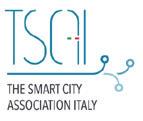
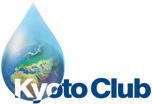
EUR S.p.A. (90% Ministry of the Economy and Finance and 10% Municipality of Rome) is a company active in real estate management and development, in the organization of major events and in the promotion of culture in the city of Rome. EUR S.p.A. has a wealth of extreme rarity and value, exceptional for the quantity of monumental buildings dating back to the Italian Rationalism Architecture period. Moreover, 70 acres of parks and gardens, all accessible to the public and considered extraordinary for their biodiversity, also belong to EUR S.p.A. Its core business lays in the management and valorization of the historical properties it owns, maximizing their profitability and always in compliance of their unique historical and artistic value.
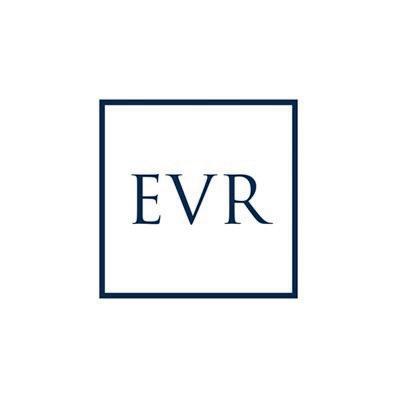
Green Building Council Italia
Diritto al futuro. Competenze e conoscenze per l’ambiente urbano costruito
Se il futuro è frutto della partecipazione e dell’immaginazione di orizzonti condivisi, nell’industria del progetto e delle costruzioni è tempo di riunire le forze lasciando alle spalle i valori estrattivi, per prediligere un approccio generativo e circolare; investendo sulle potenzialità dei dati da utilizzare al servizio delle comunità, e sulla digitalizzazione; spingendo sulla ricerca perché l’innovazione si traduca in cantieri e in pezzi di città “people first”.
In piena pandemia, dopo mesi di fatica globale nel far fronte ad un cambiamento radicale dei comportamenti, al riordino delle priorità, a domande da parte delle comunità, Sustainable Places 2021 ha invitato allo stesso tavolo centinaia di rappresentanti della ricerca europea finanziata, insieme a stakeholder, pubblici e privati, impegnati nei progetti di rigenerazione urbana.
Dall’incontro sono emerse riflessioni, sfide e appunti di progetto. Ma anche la necessità di un dialogo continuativo perché la ricerca e l’innovazione teorica si traducano in prodotti, servizi e progetti di cui la comunità potrà godere e beneficiare.
L’appuntamento si è tenuto in Italia, a Roma, nel cuore del distretto dell’Eur, per raccontare la storia di un pezzo di città costruita che, attraverso i driver dell’ecologia urbana, dell’economia d’impatto e della qualità del progetto, potrà diventare un riferimento per l’innovazione, nel caso in cui i parametri Esg vengano considerati da tutti gli stakeholder, pubblici e privati, chiamati in causa.
Dal cuore di una città storica alla vetrina del Mipim di Cannes, dove l’immobiliare del mondo si dà appuntamento ogni anno. Facendo tesoro dei risultati emersi nel laboratorio-Sustainable Places, nasce questo instant book che si propone come un outlook per il settore, con interviste inedite, storie di progetto e riflessioni. Una mappa entro la quale orientarsi per intercettare le sfide che arriveranno. Un prodotto editoriale che si fa strumento di informazione e servizio non settoriale (e ad uso di una singola categoria) ma per l’intera filiera chiamata a co-partecipare al disegno dell’agenda urbana.
6
CURA DI
A
BY PPAN
Straight to the Future. Skills and Knowledge for the Built Urban Environment
If the future is the result of the participation and imagination of shared horizons, in the design and construction industry it is time to join forces leaving behind extractive values, to prefer a generative and circular approach; investing in the potential of data to be used at the service of communities, and on digitization; pushing on research so that innovation translates into construction sites and pieces of city “people first”.
In the midst of the pandemic, after months of global e ort in facing a radical change in behavior, the reorganization of priorities and the questions from communities, Sustainable Place 2021 has invited hundreds of representatives of funded European research to the same table, together with stakeholders, public and private, engaged in urban regeneration projects.
Reflections, challenges and project notes emerged from the meeting. But also the need for a continuous dialogue so that research and theoretical innovation are translated into products, services and projects that the community will be able to enjoy and benefit from.
The event was held in Italy, in Rome, in the heart of the Eur district, to tell the story of a piece of this city that, through the drivers of urban ecology, impact economy and project quality, can become a reference for innovation, if the ESG parameters are considered by all the involved stakeholders, public and private.
From the heart of a historic city to the showcase of Mipim in Cannes, where the international real estate meets every year. Taking advantage of the results that emerged in the laboratorySustainable Places, this instant book is an outlook for the sector, with unpublished interviews, project stories and reflections. A map to intercept the challenges that will come. An editorial product that becomes an instrument of information and service not, but for the entire supply chain that has to co-participate in the design of the urban agenda.
7
CONTENUTI TABLE OF CONTENTS
Storie e visioni. Pa e real estate, pubblico e privato a confronto Stories and Visions. Public Administration and Real Estate, a Comparison between The Public and Private Sectors Dove va la ricerca europea, tra digitalizzazione dell’ambiente costruito e comunità energetiche
European Research is going, between the Digitalisation of the Environment and Energy Communities Dall’Europa all’Italia andata e ritorno task force per innovare le costruzioni From Europe to Italy and back A Task Force to Innovate the Construction Sector 10 24 56
Where
DALL’EUROPA ALL’ITALIA ANDATA E RITORNO TASK FORCE PER INNOVARE LE COSTRUZIONI
FROM EUROPE TO ITALY AND BACK A TASK FORCE TO INNOVATE THE CONSTRUCTION SECTOR
10
Architetti in prima linea per una nuova cultura del progetto olistico
ampia sul cambiamento climatico e sulla resilienza. Scaricare a terra le ambizioni del Neb richiederà:
• una struttura regolatoria abilitante, che delinei target ambiziosi e standard in linea con i valori del Nuovo Bauhaus europeo (legislazione sul procurement pubblico, energia, e ambiente);
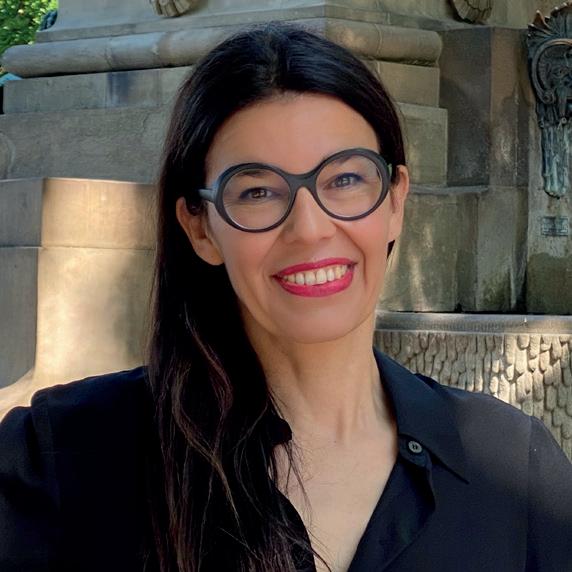
• importanti incentivi finanziari, che spingano il mercato ad alzare l’asticella e ad applicare i principi del Neb, includendo strumenti innovativi che supportino il processo stesso, che a sua volta può portare a dei miglioramenti a livello spaziale;
Europa ha richiamato il Bauhaus per tracciare una linea condivisa che tiene insieme sostenibilità, inclusività e sperimentazione artistica e architettonica. La sfida sotto la lente della presidente degli architetti europei, cosa può e deve fare il mondo della progettazione e la filiera del costruito, per tradurre i driver in progetti cantierabili?
Il Nuovo Bauhaus europeo (Neb) può davvero contribuire a quel cambio di paradigma che è necessario oggi per procedere con la trasformazione di un ambiente edificato di alta qualità e a sostegno della transizione verso la neutralità climatica. È iniziata una nuova fase storica, perché l’“Europa” si sta esplicitamente prendendo cura dell’ambiente edificato e vissuto come parte integrante di una strategia più
• di sensibilizzare la cittadinanza sui valori del Neb e migliorare le competenze dei professionisti del costruito. Abbiamo bisogno di tecnici esperti e di cittadini informati, capaci e desiderosi di coprogettare gli ambienti in cui vivono;
• promuovere un maggiore scambio di buone pratiche: ne esistono già diversi esempi in tutta Europa. Dobbiamo imparare gli uni dagli altri.
Sustainable Places è un’iniziativa che fa tesoro della ricerca e dei progetti europei e o re uno sguardo sul futuro che sta arrivando. Come si può costruire un ponte tra la ricerca e lo sviluppo? Come si fa a scaricare a terra l’innovazione?
Ci sono vari modi per colmare
il divario, quattro esempi di questi potrebbero essere:
• Partecipare ai congressi dove c’è uno scambio di conoscenze. Il Consiglio degli architetti d’Europa (Ace) partecipa a Sustainable Places sin dalla sua
11 A CURA DI BY INTERVISTA INTERVIEW
PPAN
L’
RUTH SCHAGEMANN
PRESIDENTE DEL CONSIGLIO DEGLI ARCHITETTI D’EUROPA PRESIDENT OF THE ARCHITECTS’ COUNCIL OF EUROPE
ARTELIA ITALIA è una tra le più rilevanti aziende del Gruppo Artelia per ampiezza dei servizi offerti, volume d’affari e dimensioni dell’organico. Opera principalmente nei settori Building & Industry, Retail Multi-Site, Energia e Sostenibilità Ambientale, Trasporti e Sviluppo Urbano. Artelia Italia, da 20 anni nel nostro Paese, si posiziona tra le prime società di ingegneria, con un fatturato annuo di circa 38 milioni di euro e un organico complessivo di oltre 500 persone operanti nelle sedi di Roma, Milano, Bari, Firenze e Pescara.
AXPO ITALIA è stata fondata nel 2000 durante la transizione al libero mercato ed è oggi uno dei maggiori player con una presenza lungo l’intera catena dell’energia, quarta in Italia nel mercato libero e tra le prime 100 aziende italiane per fatturato. Axpo Italia porta l’esperienza internazionale del gruppo Axpo all’interno del mercato
italiana. Axpo Energy Solutions Italia è la società del nella mobilità sostenibile. Entrambe hanno sede centrale a Genova, e sedi commerciali e di rappresentanza a Milano e Roma.
GAIAGO è la prima UrbanTech Mobility company ad integrare la mobilità sostenibile e condivisa negli spazi e ad aggregare servizi di mobilità mettendoli in connessione con i consumi delle persone. La piattaforma GaiaGo
ecosistema della mobilità, valorizzare il territorio e mettere al centro le community con l’obiettivo di stimolarle alla condivisione, ottimizzare l’uso dell’auto di proprietà, accelerare la sostenibilità delle città, migliorandone l’impronta ecologica. GaiaGo mette a disposizioni le estate, corporate e il settore sportivo.
18
CON IL SUPPORTO DI WITH THE SUPPORT OF
A CURA DI BY R2M SOLUTION
Sustainable Places, l’Europa che fa ricerca e sviluppo
In collaborazione con gli organizzatori, i partner, gli enti di supporto e le organizzazioni sponsor, è stato ancora una volta un piacere riunire gli stakeholder del mercato e della ricerca per quattro giorni di discussione, networking e divulgazione della ricerca scientifica e del progresso tecnologico con l’iniziativa “Sustainable Places” che si è tenuta in Italia, a Roma negli spazi dell’Eur, nell’autunno del 2021.
Questa nona edizione è stata, ancora una volta, un evento di spicco e un entusiasmante passo avanti, poiché continua a crescere e maturare nella sua missione di collegare gli stakeholder politici, della ricerca e del mercato attraverso azioni concrete per un futuro più sostenibile.
L’evento ha visto la partecipazione di circa 1.000 partecipanti e i risultati di 150 progetti europei di ricerca e sviluppo nel corso di 30 sessioni: una risposta
importante al valore riconosciuto al clustering, al networking e alla di usione scientifica. Sustainable Places ha anche introdotto una forte evoluzione nella struttura del programma: l’inclusione di due sessioni plenarie di workshop mattutini a livello nazionale e cittadino e tavole rotonde che hanno cercato di unire i contributi di innovatori, decision maker e responsabili politici. Queste sessioni, intitolate “Roma Smart City | Pubblico – privato, un patto per l’EUR” e “La città tra transizione e innovazione. Il punto di vista delle professioni e del real estate”, sono state eccellenti e hanno collegato l’evento in modo nuovo a temi europei, nazionali e al territorio locale. Un format che certamente riproporremo.
Durante le sessioni plenarie scientifiche, abbiamo appreso dalla commissione europea i dettagli su Horizon Europe, sul Green deal e sul pacchetto Fit for 55. La piattaforma tecnologica europea per le costruzioni ha fornito un aggiornamento sulle attività tra la commissione europea e l’industria, includendo il partenariato Built4People come punto di culminante di queste attività. Due piattaforme hanno descritto i loro progressi, Metabuilding e Building digital twin association. Ancora, il Green building council Italia ha fornito un aggiornamento sul ruolo di Gbc e sulla sua advocacy e le attività svolte in tutta Europa. Abbiamo ascoltato i principali ricercatori sui temi dello Smart readiness indicator e
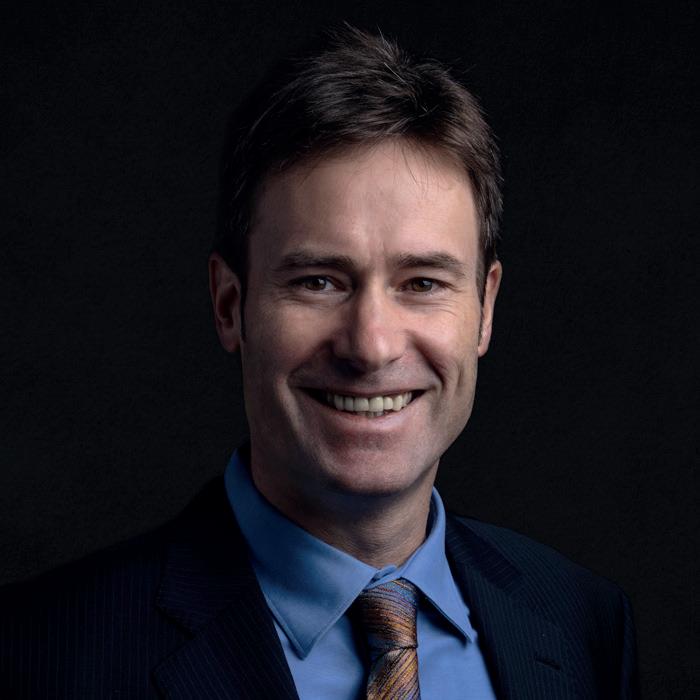
19
THOMAS MESSERVEY, FOUNDER & CEO R2M SOLUTION
A CURA DI BY PPAN
People first, fare rete, puntare sull’identità. Come essere protagonisti della transizione culturale
ome si fa a mettere in comunicazione il mondo della ricerca con i player che fanno il mercato? E come si traduce l’innovazione teorica in cantieri che parlano di transizione ecologica ed energetica, di innovazione digitale, di inclusione sociale, di sviluppo e bellezza?
Con questo obiettivo la nona edizione di Sustainable Places ha scelto la città di Roma per accendere i riflettori su un’urgenza internazionale che è ben esplicitata dal Green new deal, piuttosto che dallo New european Bauhaus, e che crede fermamente nella forza di chi lavora “insieme”, mettendo a valore conoscenza, risorse economiche e visioni.
Alberto Sasso, past president di Eur spa, ha acceso i riflettori su un pezzo della città di Roma, il distretto dell’Eur, che ha tutte le carte per diventare uno smart district e posizionarsi tra le eccellenze nei prossimi anni, come laboratorio di intervento sul costruito, facendo leva sul digitale e sul verde. «L’Eur è un distretto che nasce da una forte visione urbanistica, eredità di un grande evento: 430 ettari di superficie, di cui circa 130 sono a verde, oltre il 50% attrezzato a servizi pubblici con piazze e parchi. Nel suo percorso di
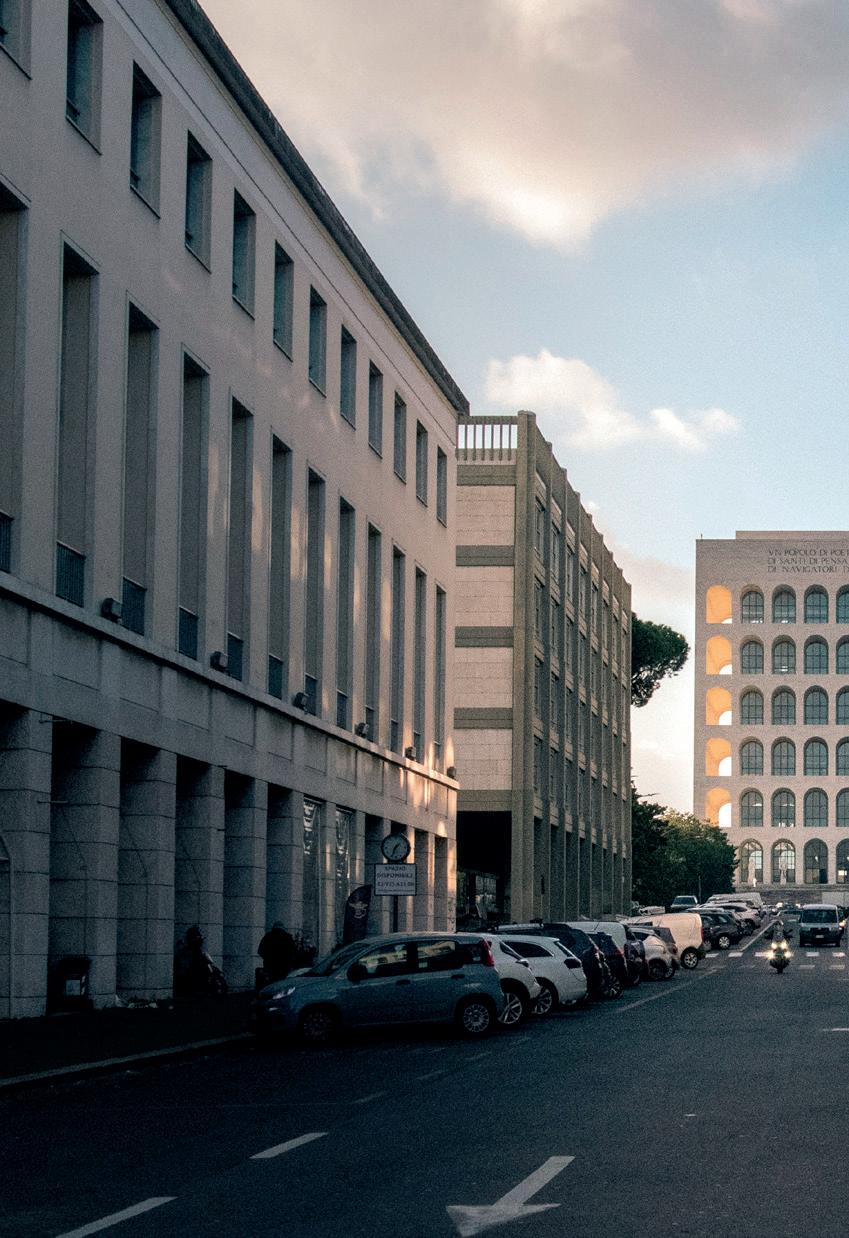
42
L’industria del progetto al lavoro per portare l’innovazione in cantiere
C
sviluppo, negli anni ‘50 e ’60 – racconta Sasso – ha potuto contare su una straordinaria ibridazione tra spazi destinati al terziario con sedi di grandi aziende e grandi capitali, ma anche con una quota residenziale».
«Nel prossimo futuro – aggiunge – c’è l’opportunità di trasformare l’Eur in un distretto dell’innovazione, in una città sostenibile connessa con una nuova visione di amministrazione urbana e immobiliare, attraverso la strutturazione di servizi digitali (a partire dal gemello digitale del quartiere, per programmare tutte le trasformazioni tecnologiche simulandole e verificando tutti gli scenari alternativi)».
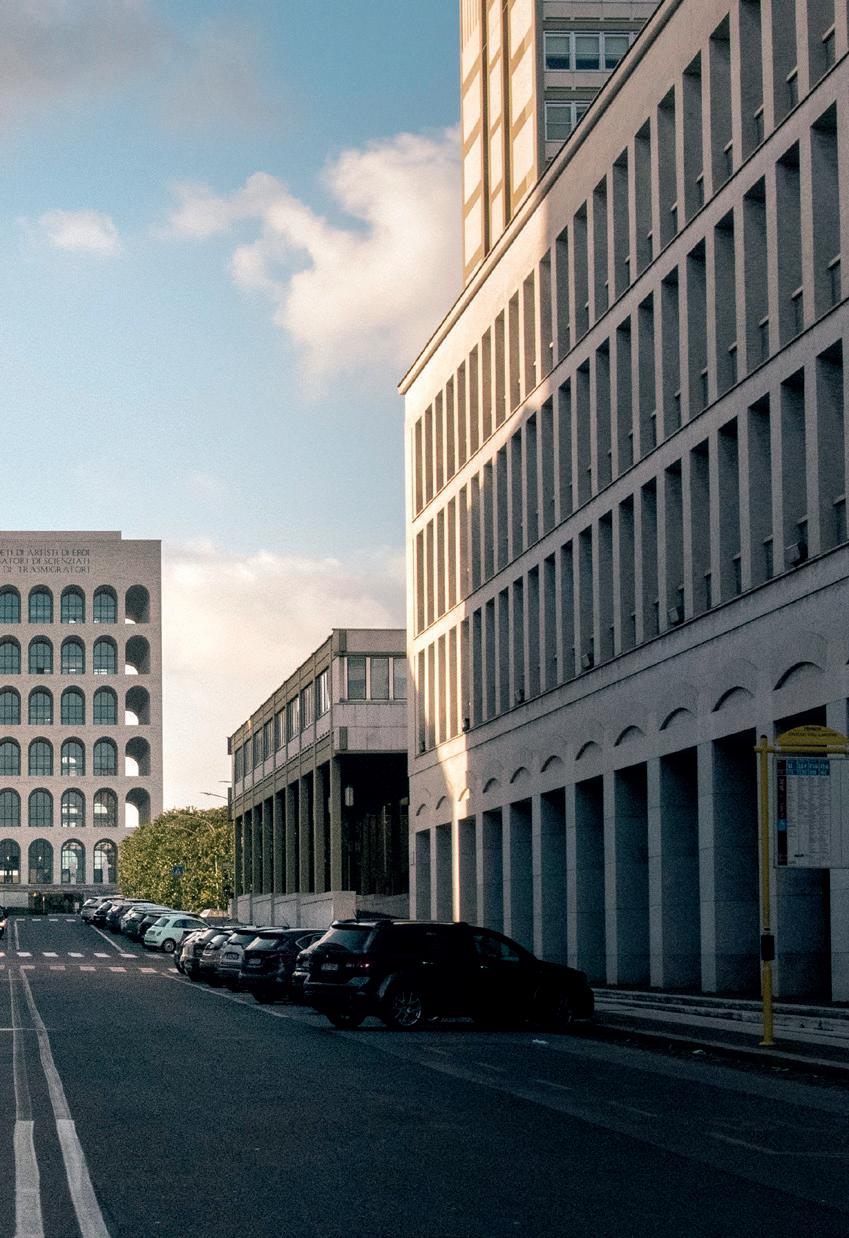
Dalla forestazione urbana alla digitalizzazione, dalla mobilità al contrasto ai cambiamenti climatici: temi che per
l’Eur si sposano con il valore culturale di un distretto che è centrale per la cultura l’economia, lo sport e l’intrattenimento. L’Eur come una micro-città che racconta quanto le sfide siano aperte per scaricare a terra ricerche, studi, innovazioni nelle tecnologie, nei servizi e nei prodotti. Dove inclusione sociale e governance diventano ingredienti determinanti al pari della sostenibilità.
Portare innovazione valorizzando l’esistente. Intervenire sul costruito, con innovazione. Ma come? Tra i player italiani in campo c’è Generali Real Estate, e Paolo Micucci, head of engeneering & project manager del gruppo, ha raccontato alla platea di Sustainable Places quanto «la loro attività principale sia quella legata alla gestione del portafoglio immobili del gruppo. Nell’ambito di questa gestione –ha esplicitato – però, parecchie energie (per un importo dell’ordine dei 400 milioni di euro all’anno) vengono dedicate a progetti di rigenerazione edilizia e rigenerazione urbana». E tra gli esempi c’è il progetto di CityLife a Milano.
Generali Real Estate è al lavoro da tempo per tradurre in progetto i parametri Esg. «La cosa che ci interessa di più è renderli reali, misurabili e concreti. Per la governance in particolare abbiamo definito dei Kpi di cui teniamo conto già in fase di masterplanning. In ambito sociale abbiamo deciso di intervenire sull’indotto, introducendo dei parametri di valutazione da parte dei nostri fornitori che rispecchiano gli aspetti di sostenibilità, e abbiamo deciso di attivare dei servizi alla comunità. Ancora, per quanto riguarda l’aspetto dell’environment – dice Micucci – partiamo dallo standard dei certificati di alto livello, anche allineandoci alla tassonomia europea e proprio per questo ci siamo riproposti di ridurre di almeno il 30% i consumi energetici, anche per poter finanziare i nostri progetti con dei green bond che vengono emessi dalla nostra stessa compagnia assicurativa».
In prima linea sui temi dell’economia circolare (riutilizzando i materiali esistenti e dotandosi di impianti per favorire le energie rinnovabili); al lavoro anche per
43
DOVE VA LA RICERCA
EUROPEA, TRA DIGITALIZZAZIONE DELL’AMBIENTE COSTRUITO E COMUNITÀ ENERGETICHE
WHERE EUROPEAN RESEARCH IS GOING, BETWEEN THE DIGITALISATION OF THE ENVIRONMENT AND ENERGY COMMUNITIES
56
28 workshop workshops
150 progetti europei European projects
7 sessioni tematiche thematic sessions
850 milioni di euro million euros 5 plenarie plenaries
1.500 organizzazioni che svolgono attività di ricerca organizations carrying out research activities
57
numeri, progetti, temi figures,
Sustainable Places 2021
projects, themes
ROMA | 28 settembre – 1° ottobre 2021 ROME | 28 September – 1 October 2021
A CURA DI BY R2M SOLUTION
Le tematiche emerse nel corso di Sustainable Places 2021
Soluzioni Rhc (Renewable heating and cooling) per gli edifici e l’industria 2.0
Le tecnologie energetiche da fonti rinnovabili per il riscaldamento e il ra reddamento (Rhc) sono sicure, pulite, e cienti e sempre più competitive in termini di costi. Nel documento prospettico Vision 2050, la piattaforma tecnologica europea per il riscaldamento e il ra reddamento da fonti rinnovabili (Rhc Etip) prevede che entro il 2050 tutti i cicli, al 100%, si basino su energia rinnovabile
Nel corso della nona edizione di Sustanaible Places, 20 progetti, parte di Horizon 2020 e finanziati dall’Unione europea, hanno coinvolto esperti dei settori delle biomasse, della geotermia, del solare termico, degli Nzeb e delle pompe di calore, in un dialogo su una strategia comune per favorire l’uso delle tecnologie da fonti rinnovabili per il riscaldamento e il ra reddamento degli edifici e dell’industria. Questi progetti sono stati raggruppati in cinque categorie in base al loro focus:
• applicazioni industriali
• soluzioni di stoccaggio per il supporto di Rhc
• soluzioni di Rhc a basso Trl
• soluzioni Rhc ad alto Trl
• soluzioni Rhc per nZEB
Inoltre, è stata presentata un’iniziativa curata dalla European heat pump association (Ehpa), che raggruppa i loro progetti finanziati dall’Ue sulle soluzioni Rhc.
Certificati di prestazione energetica degli edifici:
lo Smart readiness indicator (Sri) come elemento facilitatore
Nel corso di Sustainable Places 2021 è stato organizzato un workshop a supporto dell’implementazione dello Smart readiness indicator (Sri) e delle sue future applicazioni sia a livello europeo che nazionale. A guidare l’iniziativa la federazione delle associazioni europee per il riscaldamento, la ventilazione e il ra redamento (Rehva) con i membri del cluster degli attestati di
58
prestazione energetica di nuova generazione, insieme tra gli altri al team SmartBuilt4EU.
L’obiettivo principale è quello di fornire un supporto generale agli stati membri negli imminenti test nazionali sullo Sri, per sostenerne l’immediato e ulteriore sviluppo (valutazione qualitativa) nonché le potenzialità future, che potranno portare ad una performance intelligente (valutazione quantitativa). L’intento era quello di includere anche gli altri strumenti di policy correlati, nel più ampio contesto delle prestazioni edilizie, con l’obiettivo di garantire un quadro di coerenza delle prestazioni energetiche degli edifici (Epb) a nchè tutti gli strumenti vengano integrati in modo e cace: Sri, certificati di prestazione energetica (Epc), registri digitali degli edifici, tabelle di marcia e passaporti di ristrutturazione, livello (s).
Smart building: le priorità in ambito di ricerca e innovazione
Nel corso di Sustainable Places sono stati presentati i primi quattro white paper sui temi indagati dalle task force dedicate. Nello specifico, SmartBuilt4EU ha lanciato nel febbraio 2021 quattro gruppi di lavoro per studiare le questioni e le tendenze chiave relative agli smart building e identificare lo stato dell’arte, le migliori pratiche, gli ostacoli, le sfide e le opportunità per supportarne l’adozione. Lo scopo dei white paper era quello di consolidare un’agenda strategica di ricerca (Sria) da presentare alla commissione europea. Questa contribuirà alla progettazione dei futuri bandi di Horizon Europe sugli edifici intelligenti, suggerendo raccomandazioni ai responsabili politici. Questi gruppi di lavoro riuniscono volontari provenienti da altri progetti di Horizon 2020, e membri provenienti dal settore industriale e del no-profit.
I primi quattro white paper presentati nei workshop sono stati dedicati ai temi dell’accettazione e dell’attrattività dell’utente finale, dell’interoperabilità, della flessibilità alle reti elettriche, dei modelli di business e finanziamento intelligente. Sono stati introdotti inoltre altri argomenti relativi ai prossimi 6 mesi:
• L’edificio incentrato sull’utente: integrazione di soluzioni intelligenti per migliorare il benessere, l’inclusività e la salute degli occupanti;
• I costi di costruzione ottimizzati: integrazione di strumenti durante l’intero ciclo di vita (inclusi Bim, digital twin, manutenzione predittiva, Ai, previsioni meteo, controllo predittivo);
• L’integrazione degli smart building in più reti. Integrazione di smart network (accoppiamento settoriale). Requisiti di smartness per interazioni con building cluster e smart city, mobilità, comunità energetiche locali;
• Governance dei dati: sicurezza informatica, privacy e protezione dei dati, accessibilità dei dati.
59
R2M
Quando la ricerca europea finanziata porta competenze e know-how nel mercato
Nel campo della ricerca finanziata europea, l’automazione e l’informatizzazione del processo edilizio sono tra gli aspetti chiave del mercato immobiliare del prossimo futuro: dalla progettazione, alla gestione del cantiere, dalla conduzione alla manutenzione per raggiungere nuovi obiettivi di e cienza, confort e di ottimizzazione delle risorse.
Non parliamo solo di Bim e digital twin con progetti come Sphere, ma anche e soprattutto della partecipazione al ra orzamento di una filiera tesa all’industrializzazione dei processi edilizi (Metabuilding & MetabuildingLabs) per ridurne i costi, controllarne e ottimizzarne sia a livello di consumi che di produzione di energia, gestire l’interazione tra edifici e rete energetica nazionale, fino ad arrivare in un prossimo futuro al tema del
demand response, della smart grid e della blockchain.
Aspetto chiave per l’Unione europea è quello di dare la possibilità a proprietari ed asset manager di avere il pieno controllo dei big data degli immobili, creando analisi tecniche e di benchmark, arrivando ad ottimizzare la gestione, la manutenzione e le performance degli edifici in ottica Esg.
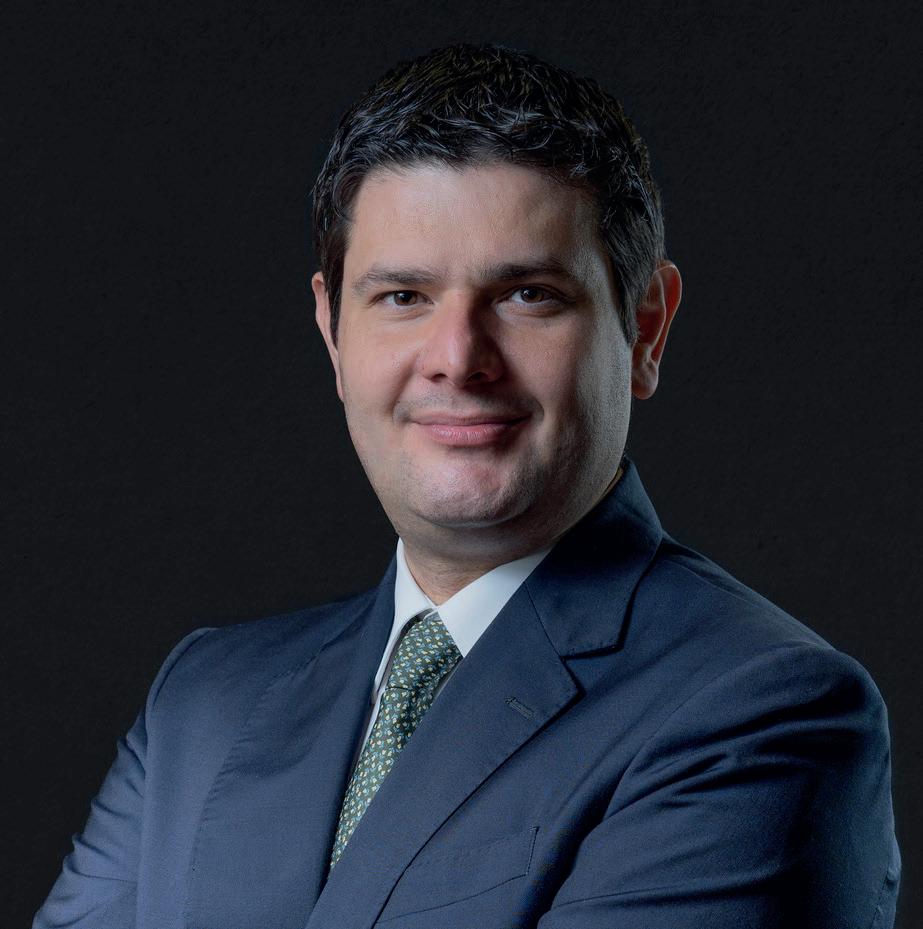
Dal report dell’Unione europea 2021 sullo stato della digitalizzazione del mercato del real estate in Europa, il gap fra le prestazioni definite in fase di progetto e quelle e ettive al termine del processo di realizzazione è ancora molto grande Tuttavia, sono oggi disponibili nuove tecnologie a supporto della costruzione che attraverso semplici app e sistemi di testing permettono di analizzare parametri chiave come la qualità e la tenuta all’aria, la dispersione termica, gli inquinanti in ambiente, oppure permettono di creare stati di avanzamento lavori con nuvole di punti e video tour rapidi precisi, economici e pronti per lo scan2bim.
Alla base delle innovazioni per il mondo del costruito troviamo il contenimento dei costi, la rapidità di utilizzo e la facilità di trasporto in modo da semplificare (e quindi intensificare) le prove in corso d’opera per garantire la risoluzione dei problemi appena si presentano, invece di intervenire
70
A CURA DI BY
SOLUTION
DI ALESSANDRO LODIGIANI, COUNTRY MANAGER ITALY R2M SOLUTION
al termine del processo, quando rimediare è più oneroso. Ovviamente questo significa che dai produttori di materiali e componenti, a chi progetta, a chi installa e poi gestirà gli asset è necessario puntare sulla ricerca e sviluppo sia per essere in grado di usare queste nuove tecnologie, sia per renderle interoperabili tra loro. Con R2M Solution cerchiamo di inserirci nella filiera come mediatori e facilitatori, con servizi e prodotti che aiutare domanda ed o erta ad orientarsi nel mondo delle tecnologie a crescita esponenziale, sia partecipando ai progetti europei, e ancora customizzando queste soluzioni nelle loro attività o progetti. Il tutto non solo nella fase di progettazione e costruzione, ma anche creando innovazione nel mercato dei servizi tradizionali del real estate come la valutazione e la due diligence immobiliare, il project and construction monitoring fino ad arrivare al property e facility management.
Le sfide sono ancora tante, ma grazie ad iniziative come Sustainable Places riusciamo a far riconoscere al mercato il valore della ricerca europea finanziata nel mondo delle costruzioni e il potenziale che queste innovazioni porteranno nei prossimi anni nel real estate.
When Funded European Research Brings Skills and Know How to the Market
In the field of European funded research, the automation and computerization of the building process are among the key aspects of the real estate market of the near future: from design to site management, from management to maintenance to achieve new objectives of e ciency, confort and optimization of resources.
We are not only talking about Bim and digital twin with projects such as Sphere, but also and above all about the participation in strengthening a supply chain aimed at the industrialization of building processes (Metabuilding & MetabuildingLabs) to reduce costs, control and optimize both in terms of
consumption and energy production, managing the interaction between buildings and the national energy grid, up to the theme of demand response, smart grid and blockchain in the near future.
A key aspect for the European Union is to give owners and asset managers the opportunity to have full control of the big data of the buildings, creating technical and benchmark analysis, coming to optimize the management, maintenance, and performance of buildings from an ESG perspective.
From the European Union 2021 report on digitalization of the real estate market in Europe, the gap between the performance defined in the project phase and the actual ones at the end of the implementation process is still very large. However, new technologies are now available to support the construction that through simple app and testing systems allow to analyze key parameters such as quality and air tightness, thermal dispersion, pollutants in the environment, or allow to create states of Work progress with point clouds and fast video tours that are accurate, cheap and ready for Scan2Bim.
At the base of the innovations for construction sector we find the containment of costs, the speed of use and the ease of transport in order to simplify (and therefore intensify) the tests in progress to ensure the resolution of problems as soon as they arise, instead of intervening at the end of the process, when remedying is more expensive. Obviously, this means that from the manufacturers of materials and components, to those who design, to those who install and then manage the assets it is necessary to focus on research and development both to be able to use these new technologies, and to make them interoperable with each other.
With R2M Solution we try to be part of the supply chain as mediators and facilitators, with services and products that help supply and demand to orient themselves in the world of exponential growth technologies, both by participating in European projects, and still customizing these solutions in their activities or projects. All this not only in the design and construction phase, but also by creating innovation in the market of traditional real estate services such as real estate valuation and due diligence, project and construction monitoring up to property and facility management.
The challenges are still many, but thanks to initiatives such as Sustainable Places we can make the market recognize the value of European research funded in the world of construction and the potential that these innovations will bring in the coming years in the summer.
71
A CURA DI BY R2M SOLUTION
Il valore delle Sustainability Solutions
DI ANTONELLO MAGLIOZZI, HEAD OF SUSTAINABILITY SOLUTIONS, ARCADIS ITALIA
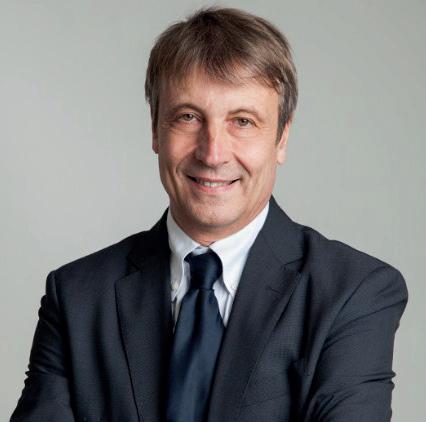
La sostenibilità è un libro di istruzioni sulla chimica funzionale dei sistemi viventi complessi. È per noi come una molecola filamentosa che unisce i saperi più diversi, e che così definisce la sintassi ed i caratteri della nostra organizzazione. Per noi la sostenibilità è incorporata nel Dna aziendale con l’obiettivo di risolvere problematiche ambientali, mediante soluzioni che migliorano la qualità della vita delle persone. Abbiamo così progressivamente accumulato le esperienze più diverse, acquisendo nel tempo nuove informazioni e metodi, comprendendo la necessità di un approccio scientifico sempre più esteso, mai uguale nei diversi casi.
La necessità di un approccio sostenibile, oggi, viene considerata indi eribile dalla maggior parte delle persone, così come dalle diverse organizzazioni o istituzioni, le quali interagiscono di erentemente all’interno della catena del valore dei processi gestionali o di sviluppo. Ed è per questo che riteniamo indispensabile una visione che catalizzi tutti gli stakeholder all’interno di un ecosistema alla stregua di un organismo vivente. Noti gli obiettivi sfidanti della Carta di Parigi, così come ribaditi ed estesi anche nell’ultimo Cop26, oggi qualsiasi approccio sostenibile ha certamente un carattere di forte urgenza, ma ha soprattutto il requisito di dover assicurare la verificabilità e misurabilità dei risultati in un contesto multidimensionale. Non è infatti più sostenibile trattare argomenti sull’e cienza energetica in modo separato rispetto a quelli che sono associati, ad esempio, all’ambiente oppure all’inclusività delle scelte. Non è inoltre immaginabile sottovalutare l’importanza delle relazioni sistemiche delle diverse parti in causa, ovvero operare senza considerare una stakeholder map che cristallizzi i vari processi di decision-making nell’unione dei profili ambientali, sociali ed economici. Una ragione secondo cui, ad esempio in ambito finanziario, molti investitori hanno ormai compreso l’importanza di una corretta applicazione dei criteri Esg, dalla pianificazione strategica all’implementazione e rendicontazione,
74
in un contesto che considera le soluzioni ambientali, sociali e di governance, in funzione dei valori patrimoniali real estate. Nel linguaggio comune, la sostenibilità è così divenuta anche sinonimo di un valore economico preservato o aumentato nel tempo, un driver imprescindibile di qualsiasi sviluppo per il raggiungimento di golden goal. In tale ottica, riteniamo che oggi possa davvero fare la di erenza la scalabilità e replicabilità delle soluzioni, ma anche l’adattabilità delle stesse nella specificità di ogni contesto. In particolare, nell’a rontare la sostenibilità è oggi opportuno massimizzare l’impatto positivo di tutte le scelte, al fine di innescare degli e etti a cascata di processi virtuosi di economia circolare, dalla scala dell’edificio a quella territoriale, dal livello urbano a quello geografico. Ed è per questo che, in aderenza agli scopi della sfida 11 degli Sdg - “Sustainable cities & communities”, Arcadis Italia ritiene strategici sviluppi che considerino la singolarità ed autenticità delle culture locali, insieme a quelli dei valori ambientali e storici contraddistintivi del territorio, al fine di poter attivare processi di rigenerazione urbana che creino davvero valore.
Nella fattispecie, così come è emerso dall’esperienza maturata con il progetto Loc for C40-Reinventing Cities, vinto grazie ad un’idea di rigenerazione olistica di Piazzale Loreto a Milano, le soluzioni sostenibili sono e cienti solo se uniscono l’impegno di investitori privati a quelli delle pubbliche amministrazioni in un rapporto a lungo termine. È infatti indubbio che una rigenerazione urbana
determini valori finanziari negli asset privati in funzione della qualità degli spazi e servizi pubblici, così come è anche vero che, grazie all’intervento degli stessi operatori privati, le pubbliche amministrazioni concretizzano le ambizioni sia quantitative, sia qualitative di estese riconversioni urbane. Un equilibrio disciplinato proprio dai principi di sostenibilità degli interventi, i quali dettano specifici obiettivi, anche definiti Kpi di progetto, al fine di misurare il successo delle scelte in programmi che considerano l’intero ciclo di vita dei progetti. In Loc, il progetto di decarbonizzazione si è basato sulla misura dell’e cienza energetica unitamente al ciclo di vita dei materiali da costruzione. Allo stesso tempo, ha riguardato i temi ambientali della biodiversità, quelli della nuova mobilità a basse emissioni, così come quelli dei dispositivi urbani di resilienza e adattamento climatico, insieme alla previsione di gestione delle risorse idriche e dei rifiuti. L’insieme di tali sfide ha prospettato gli e ettivi benefici sociali della rigenerazione urbana ed ha così determinato la possibilità di un processo di decarbonizzazione estendibile all’intero quartiere. Una promessa che, di fatto, potrà essere mantenuta nel tempo con l’ausilio delle tecnologie e dei sistemi più innovativi, e che oggi evidenzia come la sostenibilità richieda anche il supporto della digitalizzazione e dell’intelligenza artificiale. Ciò per misurare continuativamente ogni performance, per monitorare, rendicontare, e prevedere
75
Le città sono e saranno la soluzione: luoghi di sfide e cambiamenti
Da Taranto a Bolzano, dai piccoli ai grandi centri, le città sono sempre e comunque la soluzione. A raccontarlo è Paolo Testa, responsabile area Studi e ricerche dell’Anci. Le città sono i luoghi in cui avvengono le sfide principali del nostro tempo, ma anche quelli in cui emergono le soluzioni più interessanti, sviluppate in molti casi attraverso la collaborazione tra Pa e comunità locali. La pubblica amministrazione si cambia nel momento in cui si costruiscono rapporti di collaborazione: reti tra funzionari e cittadini, operatori e amministratori, politici e professionisti.
I comuni cambiano davvero, quando si è in grado di mettere a sistema dinamiche di aiuto reciproco e sostegno. Quando c’è la volontà di trasferire competenze, pratiche, opportunità, quando c’è il coinvolgimento della parte attiva della società e delle associazioni, racconta Testa, tra gli autori, insieme a Simone d’Antonio, del libro “Le città sono la soluzione”, appunto.
«Siamo sulla soglia di un’età che possiamo definire dell’abbondanza, nei prossimi anni saranno a disposizione tante risorse. Si parla di circa 300 miliardi di euro a disposizione degli enti locali e territoriali grazie alle risorse previste dal Pnrr, dai fondi di coesione europei e da diverse altre misure che saranno messe in atto. Un’occasione da non perdere, questa, per i giovani da avviare al lavoro attraverso una nuova cultura nella gestione del servizio pubblico e per la progettazione nelle città».
In un’Italia che si porta appresso le sue diversità culturali e infrastrutturali, la situazione cambia nei comuni grandi e piccoli, da sud a nord, con una grande di erenza di passo segnata solo da Milano. Sia in termini reali che narrativi. «Milano viaggia a un altro ritmo. È oggetto non solo di grandi interventi, ma di una visione a tutto tondo: del territorio, della politica, degli imprenditori e di tutti i portatori di interesse. Ha avuto la lungimiranza di pensare a un’integrazione tra campagna e città molto evoluta (basta pensare al Parco Sud) e la determinazione di voler riportare la manifattura dentro la città. Milano ha la visione e chi la sa tradurre. Nel resto d’Italia non vedo grandi disparità nell’a rontare i cambiamenti». Oggi l’unico elemento di stasi alla nuova era di iniezione economica europea potrebbe essere solo il tempo «Bisogna fare le riforme, semplificare le procedure, ma soprattutto arruolare nuove risorse umane, un capitale umano competente e giovane. Dirigere cantieri, disegnare progetti, pensare a soluzioni innovative, sono attività che hanno bisogno di tante forze in campo». I sindaci sono il motore, ovunque si fanno molte domande e si danno già le risposte, le questioni sono quelle che sono sul palcoscenico globale e nelle città trovano i fenomeni più visibili e più drammatici: disuguaglianze e rischi infrastrutturali.
«Cresce la consapevolezza di sindaci e funzionari della necessità del coinvolgimento della cittadinanza –conclude Testa – ma dobbiamo fare i conti con uno strumentario giuridico carente, mancano le leggi che regolino in modo coerente questo movimento di rinascita».
92
A CURA DI BY PPAN
Cities are the Solution: Places of Challenges and Changes
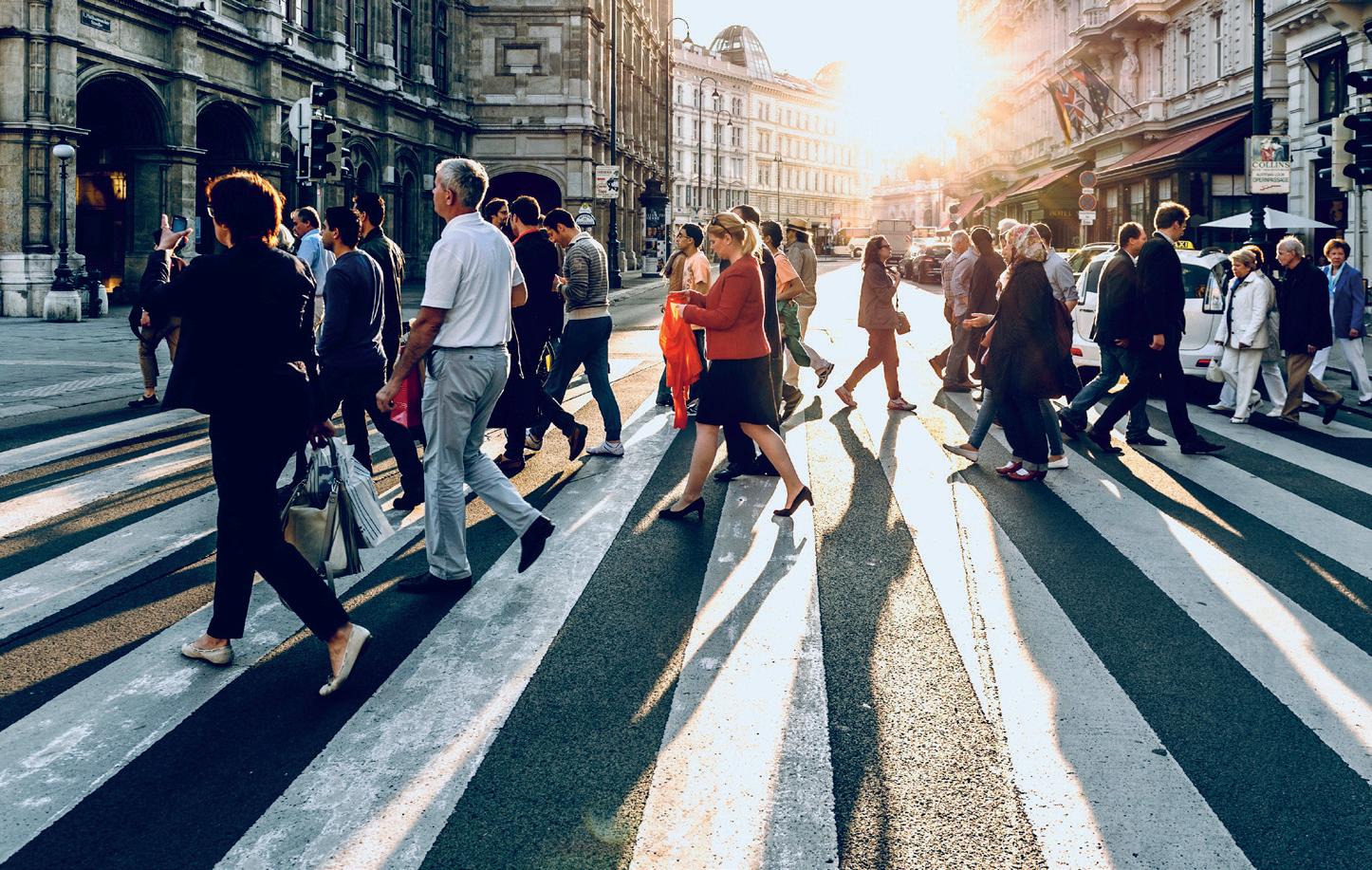
From Taranto to Bolzano, from small to large towns, cities are always driving innovation. This is the opinion of Paolo Testa, head of the Studies and Research area of Anci, the National Consortium of Italian Municipalities. Cities are the places where the main challenges of our time take place, but also those in which the most interesting solutions emerge, developed in many cases through collaboration between public administrations and local communities. Public administrations become change agents when collaborative relationships are built, through networks between o cials and citizens, operators and administrators, politicians and professionals. They drive innovation when they are able to put in place dynamics of mutual help and support; when there is a willingness to transfer skills, practices, opportunities, when there is the involvement of the active parts of society and associations, says Testa, one of the authors, together with Simone d’Antonio, of the book “The cities are the solution”, in fact. «We are on the threshold of an age that we can define as abundance, in the coming years many resources will be available. There is talk of about 300 billion euros for local and territorial authorities thanks to the resources provided by the Nrrp, the Italian plan of the European cohesion funds and various other measures that will be implemented. An opportunity not to be missed, this, for young people to start work
through a new culture in the management of public service and for the design of cities». In an Italy that brings with it its cultural and infrastructural diversity, the situation changes in large and small municipalities, from North to South, with a great di erence in pace marked only from Milan, both in real and narrative terms. «Milan travels at a di erent pace. It is the subject not only of major interventions, but of an all-round vision: of the territory, of politics, of entrepreneurs and of all stakeholders. This city had the foresight to think about a very evolved integration between the countryside and the city (just think of Parco Sud) and the determination to want to bring manufacturing back into the city. Milan has the vision and know-how to translate it. In the rest of Italy, I don’t see great disparities in dealing with changes». Today, the only element of stagnation in the new era of European economic injection could only be time. «We need to make reforms, simplify procedures, but above all enlist new human resources, a competent and young human capital. Directing construction sites, designing projects, thinking about innovative solutions, are activities that need many forces in the field». Mayors are the engine, wherever many questions are asked and answers are already given, the issues are those that are on the global stage and that find in cities the most visible and most dramatic phenomena: inequalities and infrastructural risks.
«The awareness of mayors and o cials of the need for the involvement of the citizenship is increasing – concludes Testa – but we have to deal with a deficient legal instrument, there is a lack of laws that consistently regulate this movement of renaissance».
93
94












